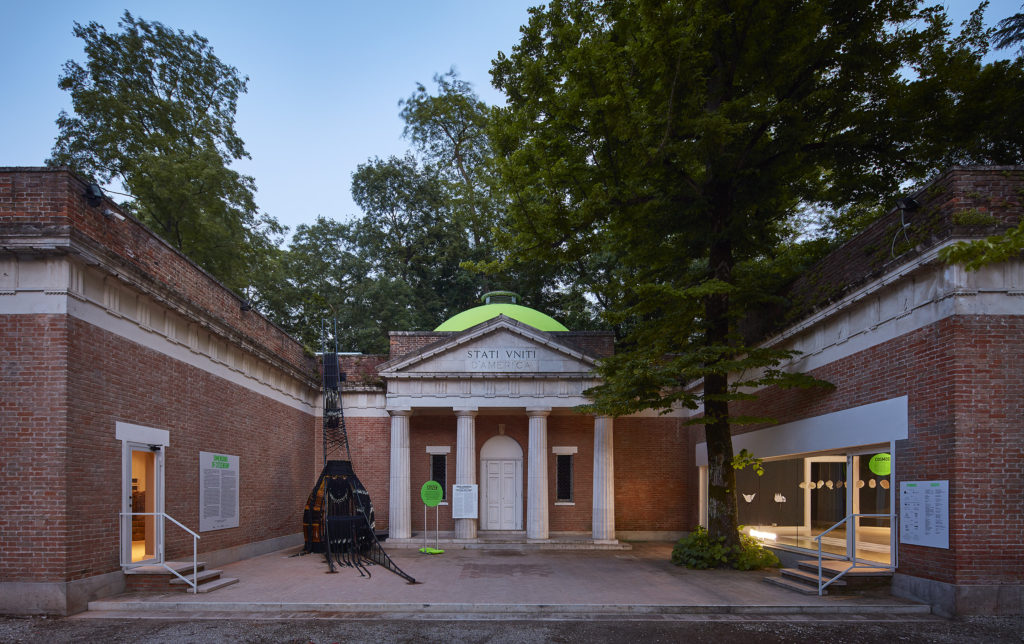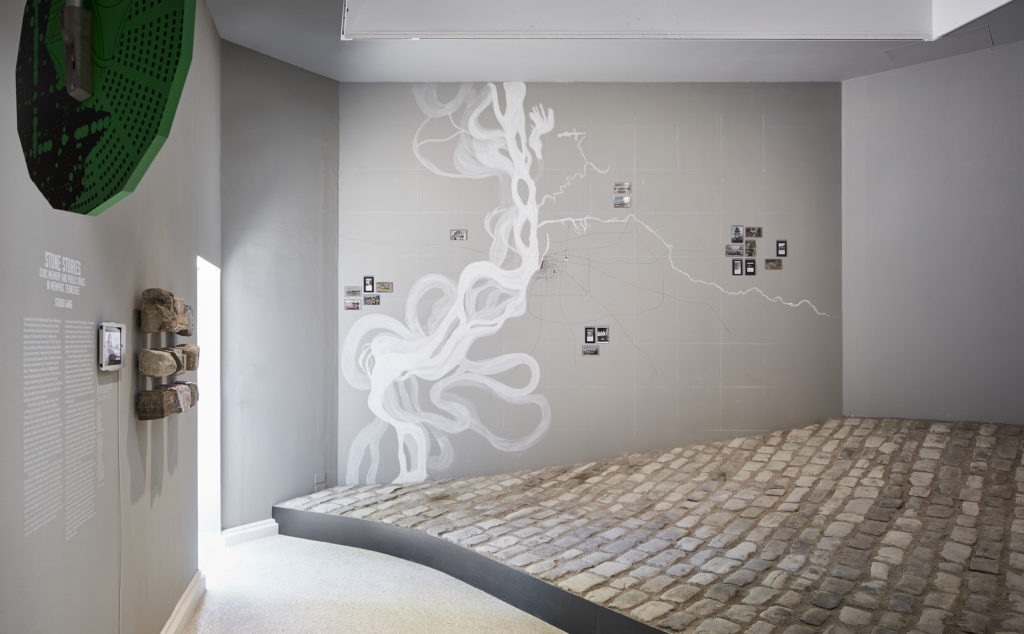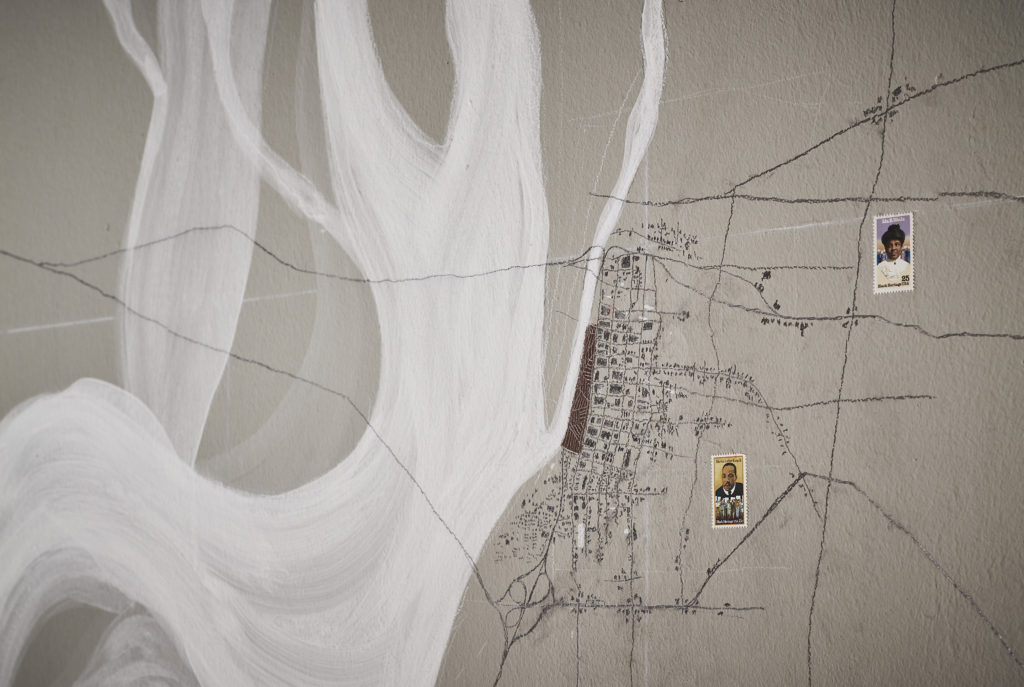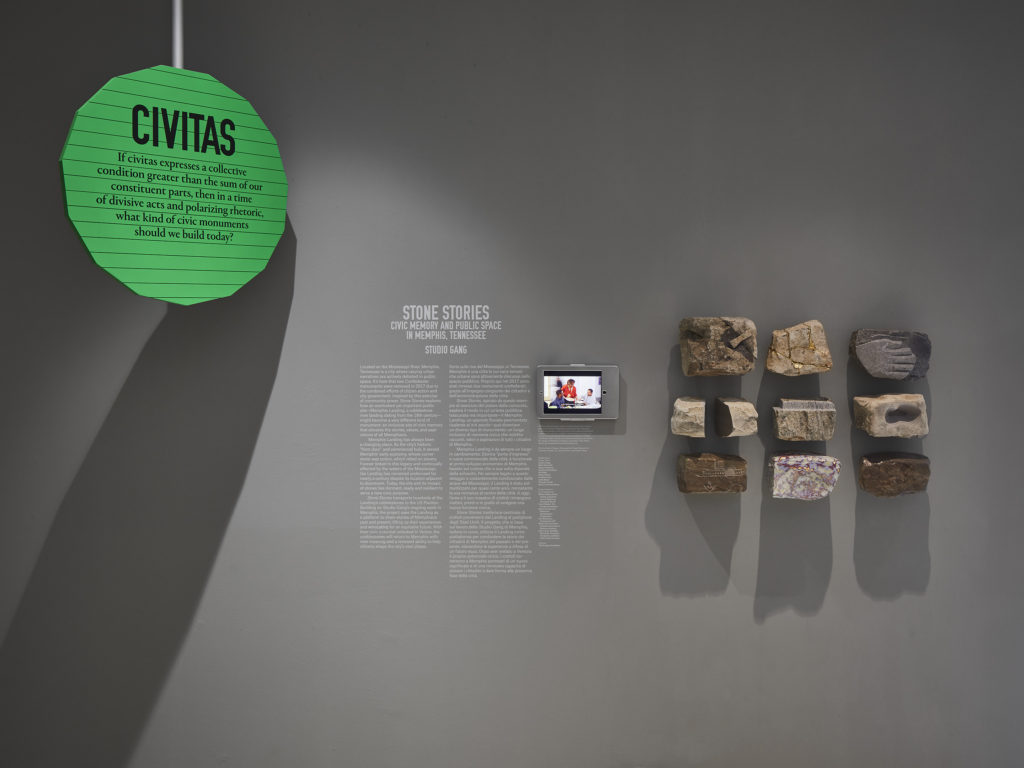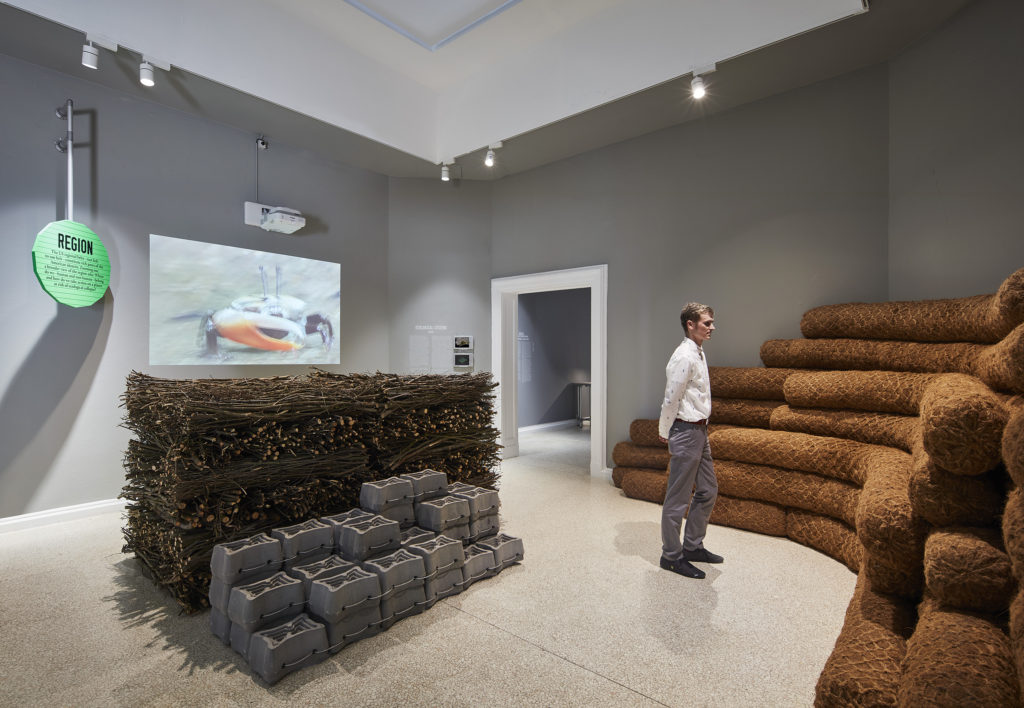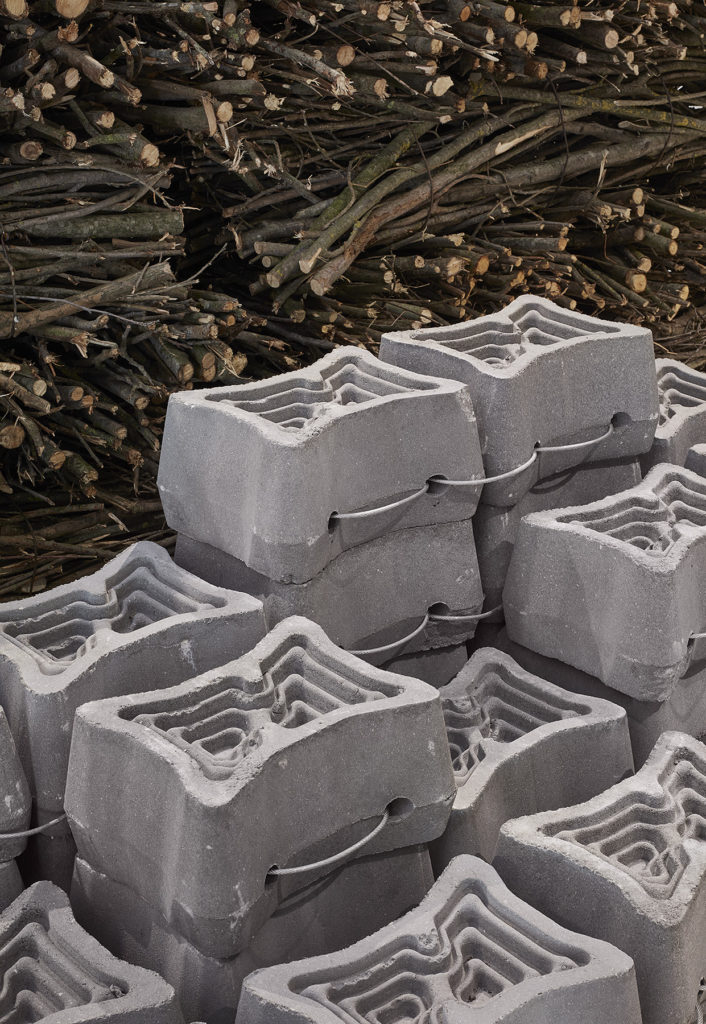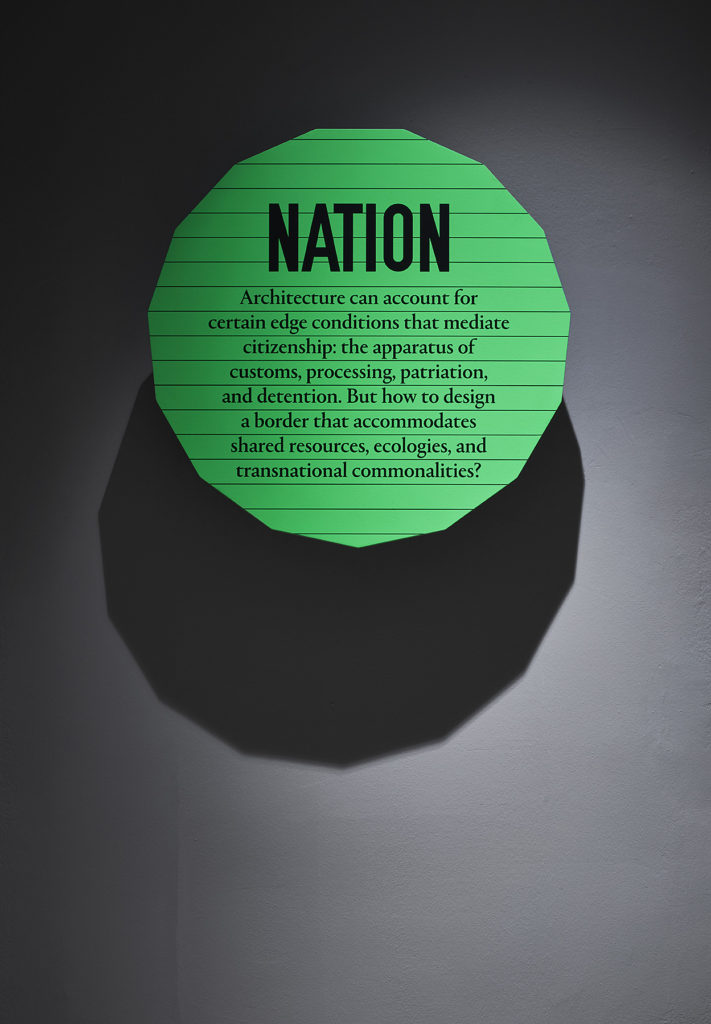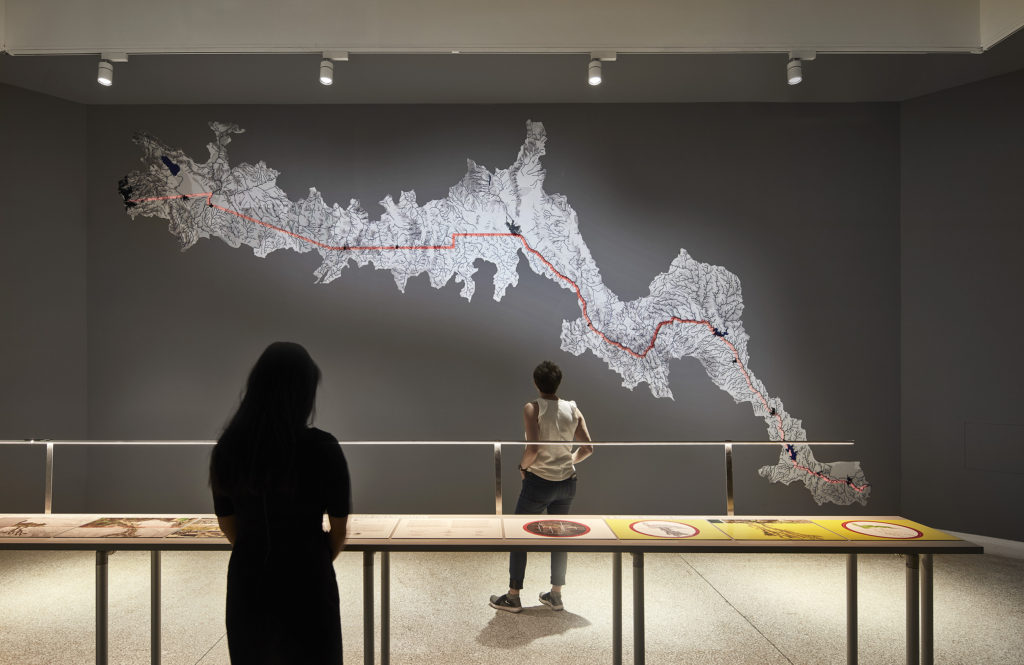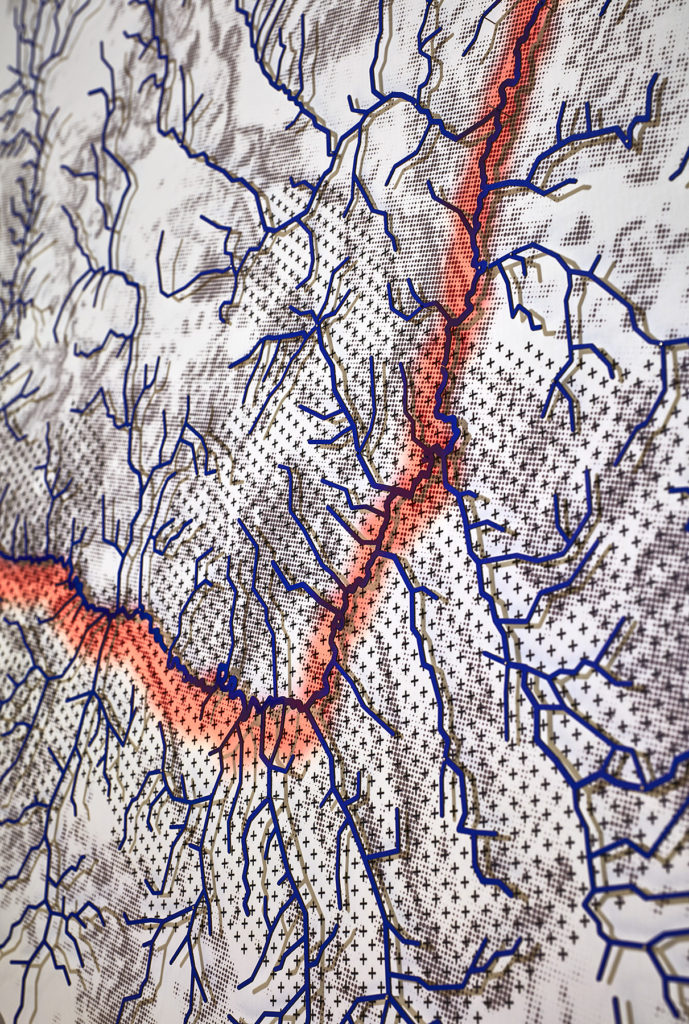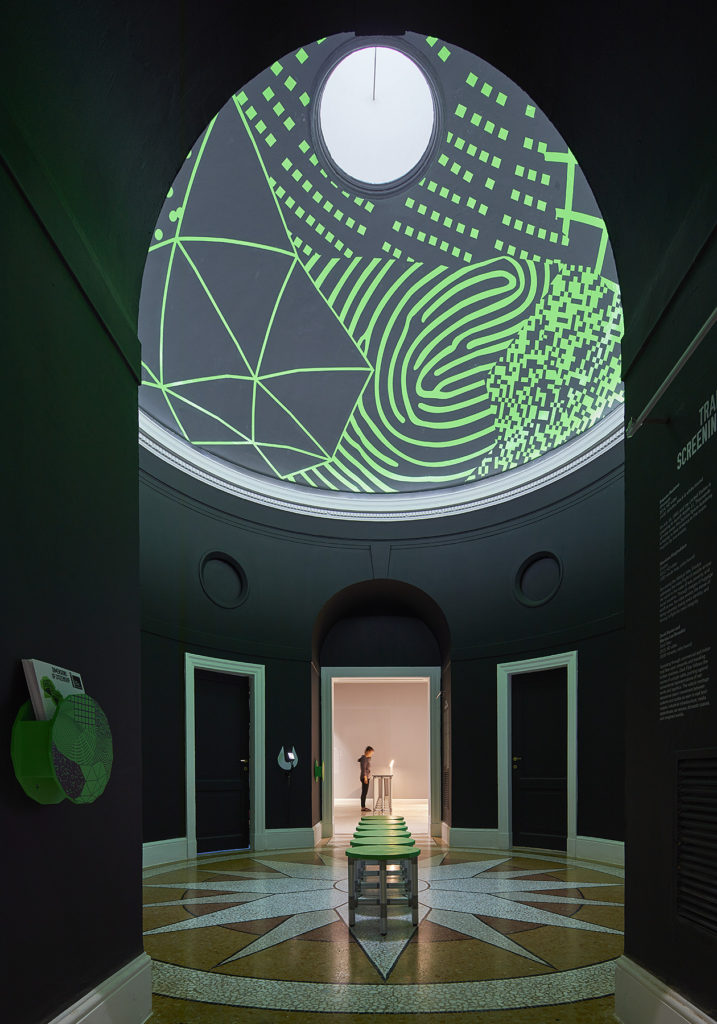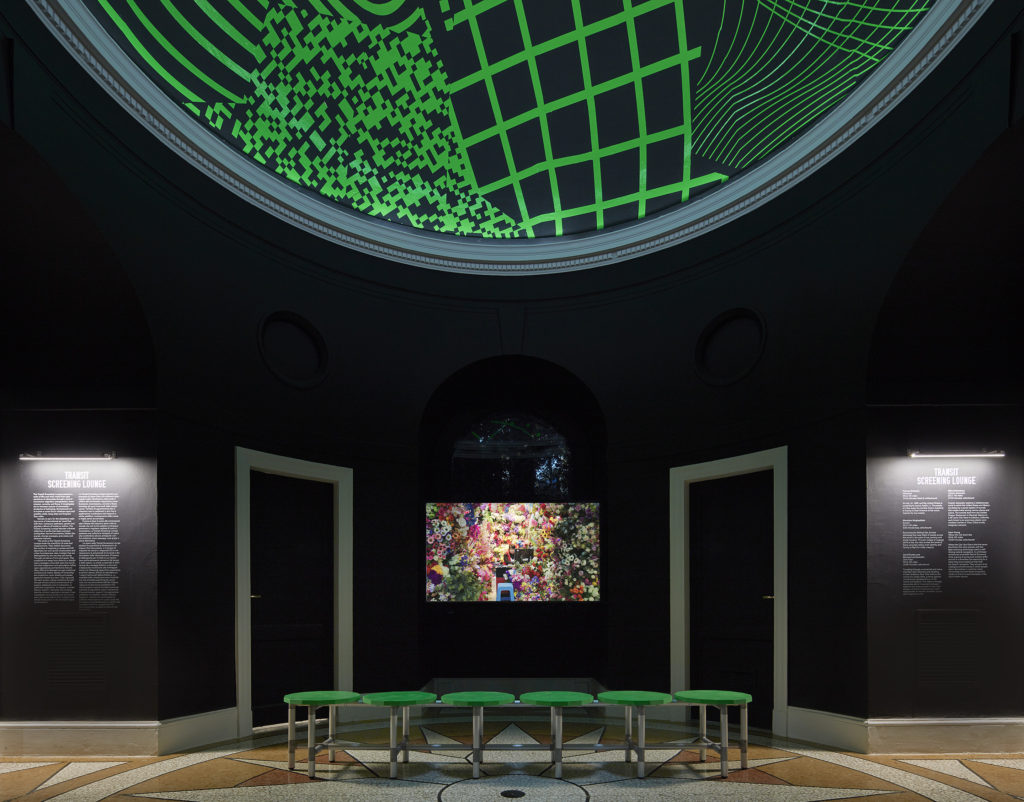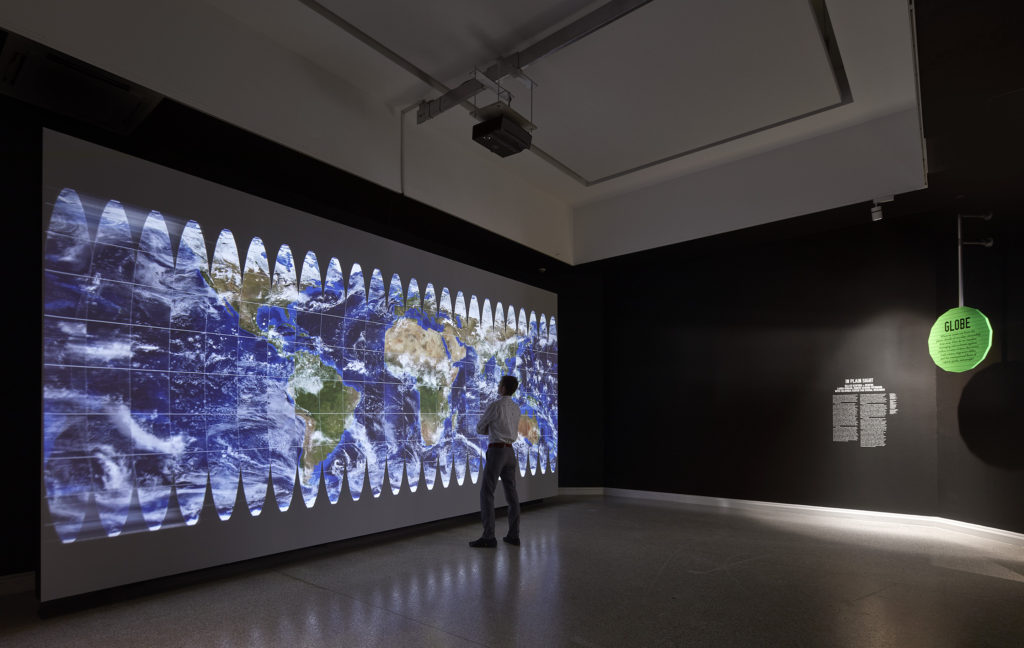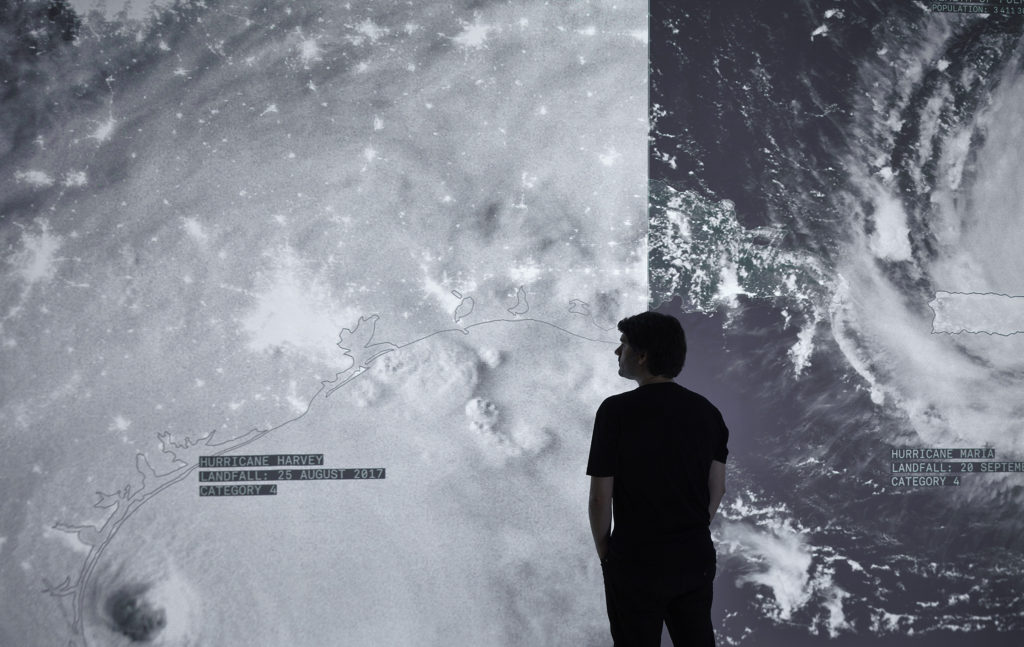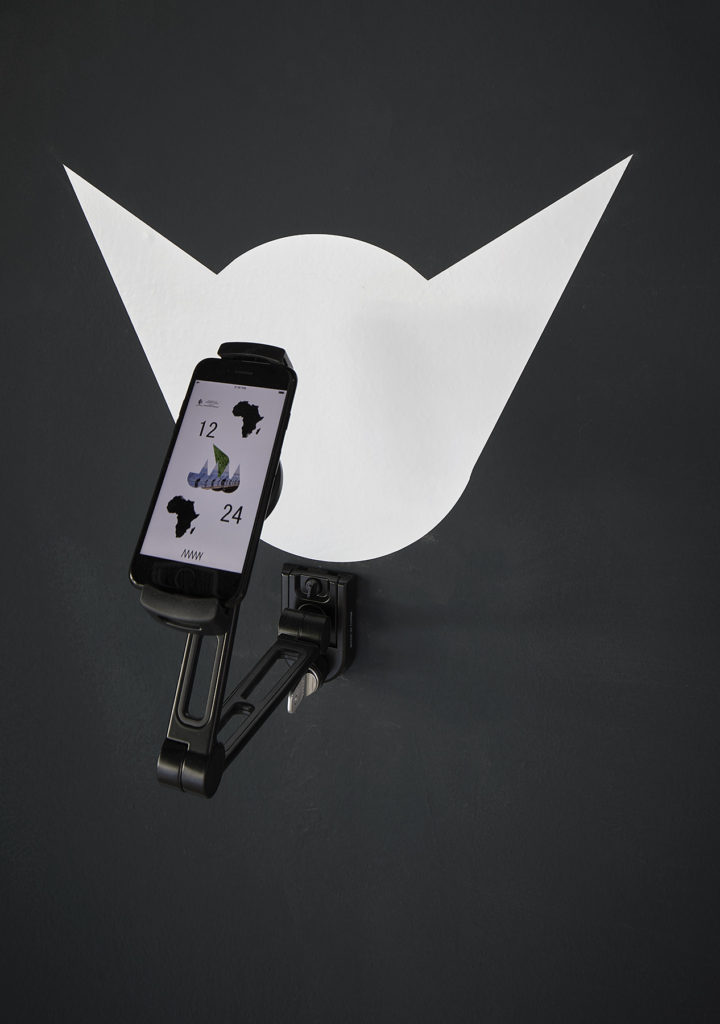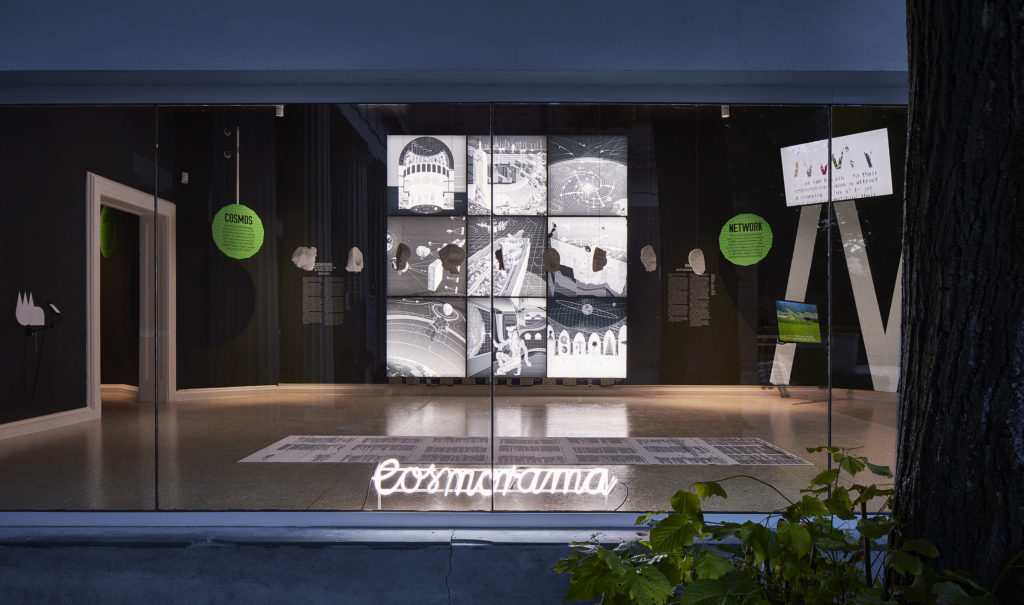US Pavilion, Venice Architecture Biennale: May 26–November 25, 2018
Wrightwood, Chicago: February 28–April 27, 2019
Curators: Niall Atkinson, Ann Lui, Mimi Zeiger, and Iker Gil
Commissioners: University of Chicago and School of the Art Institute Chicago
Participants: Amanda Williams + Andres L. Hernandez in collaboration with Shani Crowe, Studio Gang, SCAPE, Estudio Teddy Cruz + Fonna Forman, Diller Scofidio + Renfro, Laura Kurgan, Robert Gerard Pietrusko, with the Columbia Center for Spatial Research, Keller Easterling with MANY, and Design Earth
Films: Frances Bodomo, Mandana Moghaddam, David Rueter and Marissa Lee Benedict, Mika Rottenberg, and Liam Young
Exhibition and graphic design: INFO_CO
Photos: Tom Harris
In a time when the expansion of the United States–Mexico border wall looms over more nuanced discourses on national citizenship, it is urgent for architects and designers to envision what it means to be a citizen today.
Questions of belonging, of who should be included and how, are posed with every athlete taking a knee, every #metoo, every presidential tweet, and every protest sign or fist raised. Yet as transnational flows of capital, digital technologies, and geopolitical transformations expand, conventional notions of citizenship are undermined. We define the term as a tangle of rights, responsibilities, and attachments linked to the built environment. And so we ask: How might architecture respond to, shape, and express rhizomatic and paradoxical conditions of citizenship?
The US Pavilion explores seven spatial scales: Citizen, Civitas, Region, Nation, Globe, Network, and Cosmos. These scales, telescoping from body to city to heavens, broadly position citizenship as a critical global topic. Commissioned installations by architects, landscape architects, artists, and theorists investigate spaces of citizenship marked by histories of inequality and the violence imposed on people, non-human actors, and ecologies. These works aim to manifest the democratic ideals of inclusion against the grain of broader systems: new forms of sharing economy platforms, the legacies of the Underground Railroad, tenuous cross-national alliances at the border region, or the seemingly Sisyphean task of buttressing coastline topologies against rising tides.
The installations and the film and video works on view do not solve the complex relationships of governance, affinity, and circumstance that bind us, citizen to stranger, self to other. Instead, they use architecture’s disciplinary agency to render visible paradoxes and formulations of belonging. Only when spatial understandings of citizenship—legal, cultural, and ecological—are in sight might we struggle free from antiquated definitions, forms, or bureaucracies and activate potent spaces for design.
